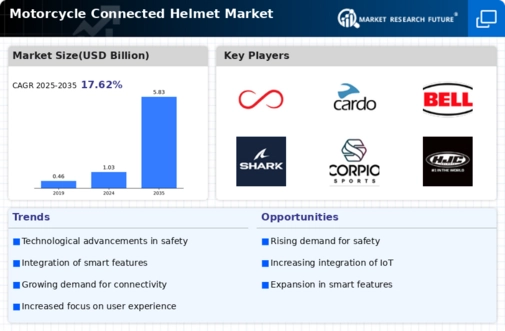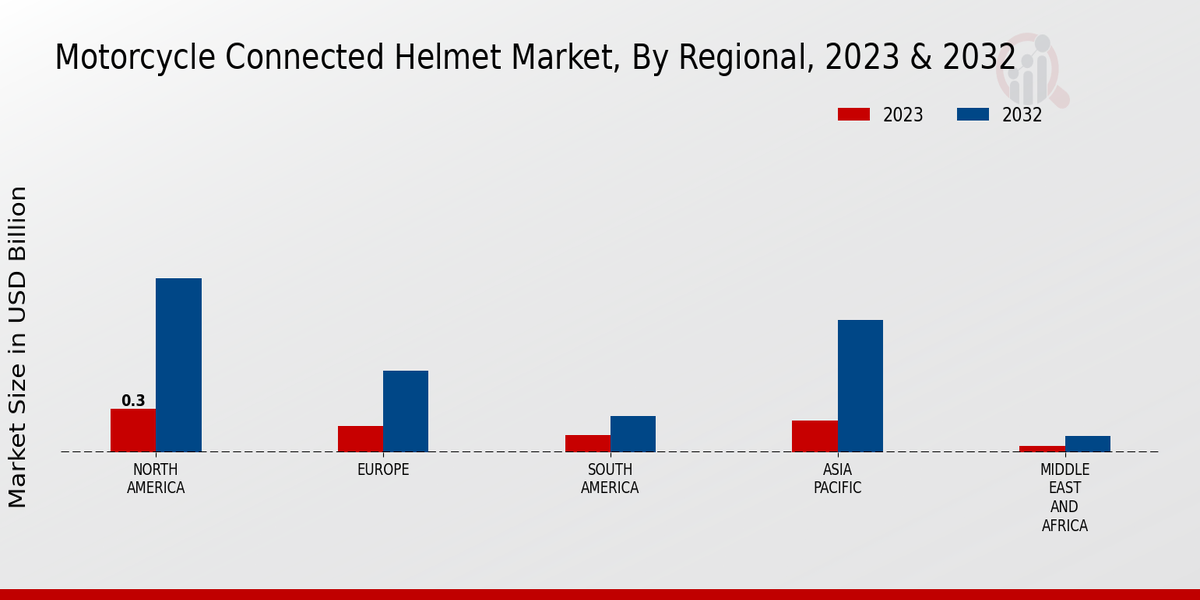Motorcycle Connected Helmet Market Summary
The Global Motorcycle Connected Helmet Market is projected to grow significantly from 1.03 USD Billion in 2024 to 5.81 USD Billion by 2035.
Key Market Trends & Highlights
Motorcycle Connected Helmet Key Trends and Highlights
- The market is expected to witness a compound annual growth rate (CAGR) of 17.08% from 2025 to 2035.
- By 2035, the market valuation is anticipated to reach 5.83 USD Billion, indicating robust growth potential.
- in 2024, the market is valued at 1.03 USD Billion, reflecting the increasing interest in connected technologies.
- Growing adoption of smart connectivity features due to enhanced safety awareness is a major market driver.
Market Size & Forecast
| 2024 Market Size | 1.03 (USD Billion) |
| 2035 Market Size | 5.81 (USD Billion) |
| CAGR (2025-2035) | 17.06% |
Major Players
Sena Technologies, Inc., Cardo Systems, Inc., LIVALL Cycling Technology Co., Ltd., Arai Helmet, Ltd., Bell Helmets, Inc., Forcite Helmet Systems, Inc., Shark Helmets, Scorpion Sports, Inc., HJC Helmets, SKULLY, Inc., Vsett Electric EU UAB, Interphone S.p.A., Shoei Co., Ltd., AGV Helmets, Airoh Helmet Srl



















Leave a Comment